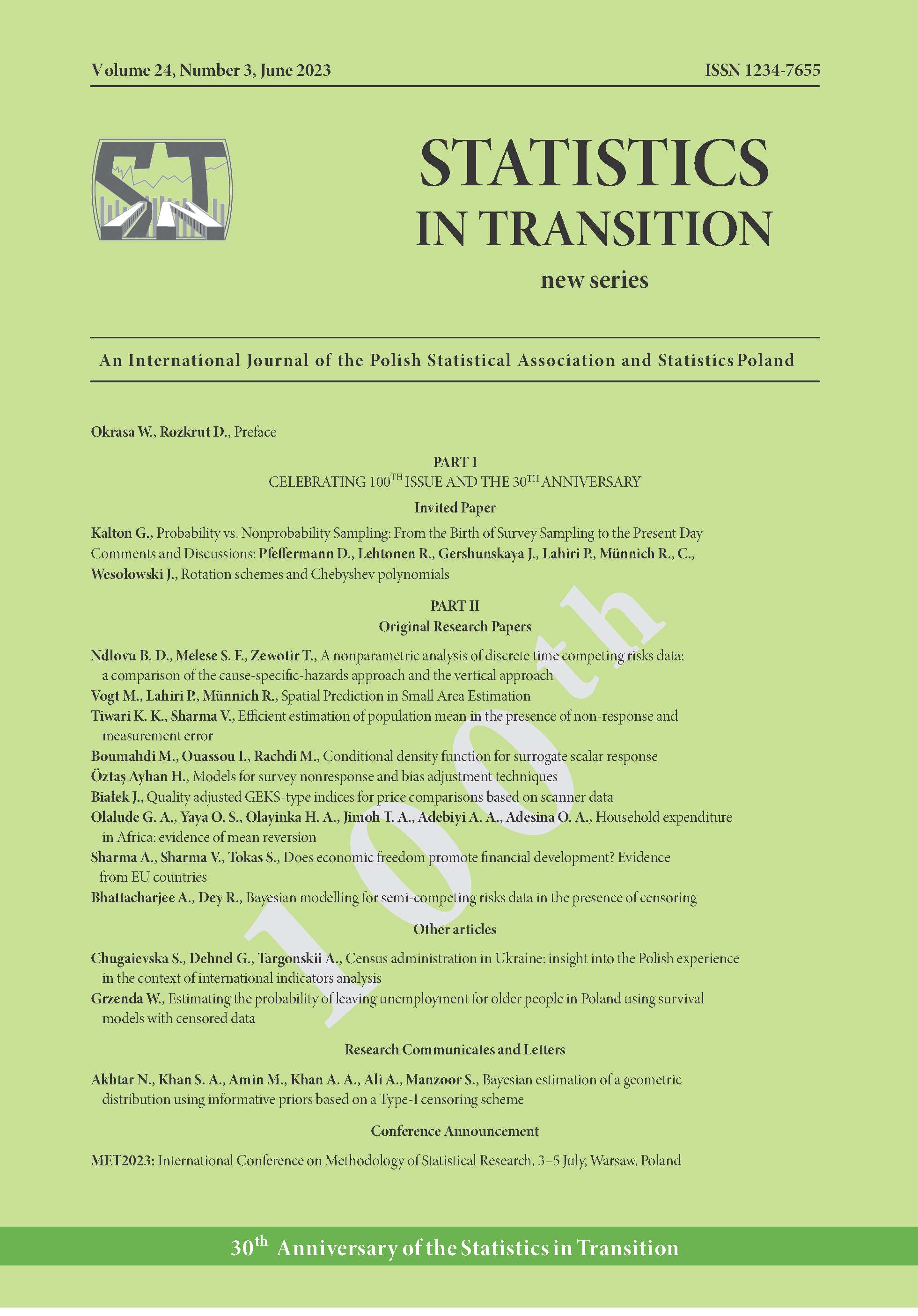ARTICLE
ABSTRACT
Nicolaie et al. (2010) have advanced a vertical model as the latest continuous time competing risks model. The main objective of this article is to re-cast this model as a nonparametric model for analysis of discrete time competing risks data. Davis and Lawrance (1989) have advanced a cause-specific-hazard driven method for summarizing discrete time data nonparametrically. The secondary objective of this article is to compare the proposed model to this model. We pay particular attention to the estimates for the cause-specific-hazards and the cumulative incidence functions as well as their respective standard errors.
KEYWORDS
vertical model; total hazards; relative hazards; cause-specific-hazards; cumula tive incidence functions.
REFERENCES
Ambrogi, F., Biganzoli, E., and Boracchi, P., (2009). Estimating Crude Cumulative Incidences through Multinomial Logit Regression on Discrete Cause Specific Hazard. Computational Statistics and Data Analysis, 53, pp. 2767–2779.
Berger, M., Schmid, M., Schmitz-Valckenberg,Welchowski, T., and Bayermann, S., (2020). Subdistribution hazard models for competing risks in discrete time. Biostatistics, 21, pp. 449–466.
Croissant, Y. and Graves, S., (2020). Ecdat: Data Sets for Econometrics. R package version 0.3 – 7
Davis, T. P. and Lawrance, A. J., (1989). The likelihood for competing risk survival analysis. Board of the Foundation of the Scandinavian Journal of Statistics, 16, pp. 23–28.
Dinse, G. and Larson, M., (1986). A note on semi-Markov models for partially censored data. Biometrika, pp. 379–386.
Gaynor, J. J., Feuer, E. J., Tan, C. C., Wu, D. H., Little, C. R., Straus, D. J., Clarkson, B. D., and Brennan, M. F., (1993). On the use of cause-specific failure and conditional failure probabilities. examples from clinical oncology data. American Statistical Association, 88, pp. 400–409.
Larson, M. G. and Dinse, G. E., (1985). A Mixture Model for the Regression Analysis of Competing Risks Data. Journal of the Royal Statistical Society. Series C (Applied Statistics), 34, pp. 201–211.
Lee, M., Feuer, E., and Fine, J., (2018). On the analysis of discrete time competing risks data. Biometrics. doi.org/10.1111/biom.12881.
Ndlovu, B. D., Melesse, S., and Zewotir, T., (2020). A nonparametric vertical model: Anapplication to discrete time competing risks data with missing failure causes. South African Journal of Statistics, 6, pp. 534–545.
Nicolaie, M., van Houwelingen, H. C., and Putter, H., (2010). Vertical modeling: A pattern mixture approach for competing risks modeling. Statistics in Medicine, 29, pp. 1190– 1205.
Nicolaie, M. A., Taylor, J., and Legrand, C., (2018). Vertical modeling: analysis of competing risks data with a cure fraction. Lifetime Data Analysis
